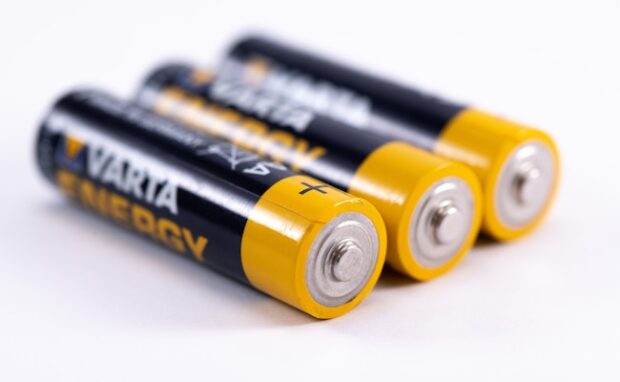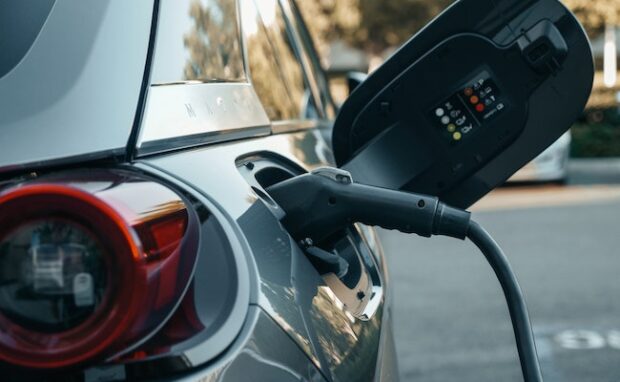Edible battery lets you EAT technology
Italian scientists created an electronic battery made of organic materials found in food. Believe it or not, that means you can eat their energy source once it runs out! Moreover, it may also be healthy because it contains essential vitamins and minerals. More importantly, this unique technology could reduce e-waste and improve various healthcare procedures.
Imagine if you could just eat broken gadgets instead of throwing them away in a landfill. They could nourish you while preventing our world from accumulating more garbage. Also, the researchers said it could improve the diagnosis and treatment of gastrointestinal tract diseases. This energy cell could also facilitate food quality monitoring.
This article will discuss how Istituto Italiano di Tecnologia scientists created an edible battery. Later, I will cover other emerging battery technologies that use unusual green alternatives.
How did they make an edible battery?

The edible energy cell uses digestible substances from common foodstuffs as battery components. Let’s discuss how a battery works briefly to explain its parts.
Batteries turn stored chemical energy into electrical energy. It passes electrons from one terminal electrode (anode) to another electrode (cathode).
An electrolyte solution is in the middle of these electrodes, balancing the electron flow. Most batteries use chemicals like manganese dioxide, zing, and cobalt dioxide.
On the other hand, the edible battery uses vitamin B2 or riboflavin for the anode. This nutrient is typically in beef, dairy, eggs, cereals, and mushrooms.
The cathode consisted of a supplement found in red onions and capers called quercetin. Also, the electrolyte is a mix of activated charcoal and a water-based solution.
Advanced Science News says activated charcoal is a common black food coloring and medicine component. “The separator, needed in every battery to avoid short circuits, was made from nori seaweed, the kind found in sushi,” Istituto Italiano di Tecnologia researcher Mario Caironi said.
“In particular, we found a suitable edible material for every single component that is necessary to realize a working battery,” he added. Moreover, he explained the edible energy source operates at 0.65 volts (V), a safe voltage for ingestion.
The battery provides tens of microamperes (μA) for over 10 minutes. “Albeit limited in capacity, what we demonstrated is already enough to supply power to small electronic devices, such as low-power LEDs, for a limited time,” Caironi stated.
The Istituto Italiano di Tecnologia is developing other electronic parts with consumable substances. “Once we crack the edible transistors, we will be able to build edible logic devices and power them with the battery,” Caironi concluded.
What are the latest battery innovations?

The edible battery is truly a unique battery technology. After all, when did you ever hear of a gadget designed for consumption? Yet, the following innovations are also transforming how we power devices:
- Structural component batteries: Researchers from the Chalmers University of Technology created a battery that is a structural component of EVs. As a result, it could reduce the weight of electric cars.
- Carbon nanotube electrodes: NAWA Technologies invented new battery technology that contains ten times the power of current EV power cells.
- Seawater batteries: IBM Research discovered a way to create EV batteries without heavy metals. It uses materials from seawater, so it would be cheaper to build.
- Sand batteries: The University of California Riverside developed battery tech that yields pure silicon from sand. The materials allow an EV battery to have three times the performance of modern graphite-based energy cells.
- Silicon Anode batteries: The University of Eastern Finland found a way to replace graphite with silicon to boost battery performance. Moreover, the new battery technology is eco-friendly because it consists of barley husk ash.
Conclusion
Istituto Italiano di Tecnologia researchers created an edible battery made of food nutrients. As a result, it could reduce electronic waste as it will enable people to consume non-functional devices instead of throwing them away.
“This edible battery is also very interesting for the energy storage community. Building safer batteries, without the usage of toxic materials, is a challenge we face as battery demand soars,” Ivan Ilic, one of the study’s co-authors, said.
Learn more about the edible battery technology at the Istituto Italiano di Tecnologia website. Also, check more digital tips and trends at Inquirer Tech.